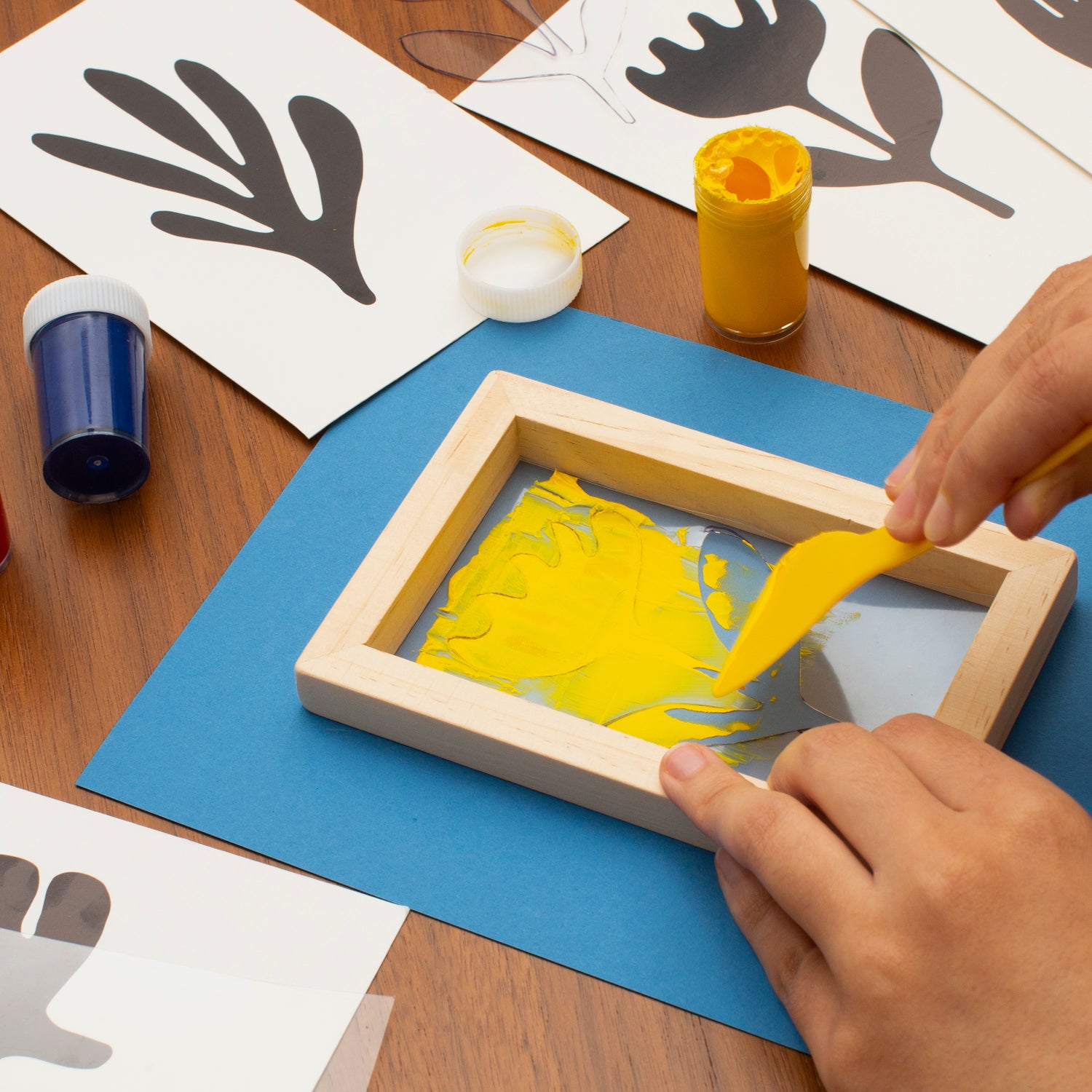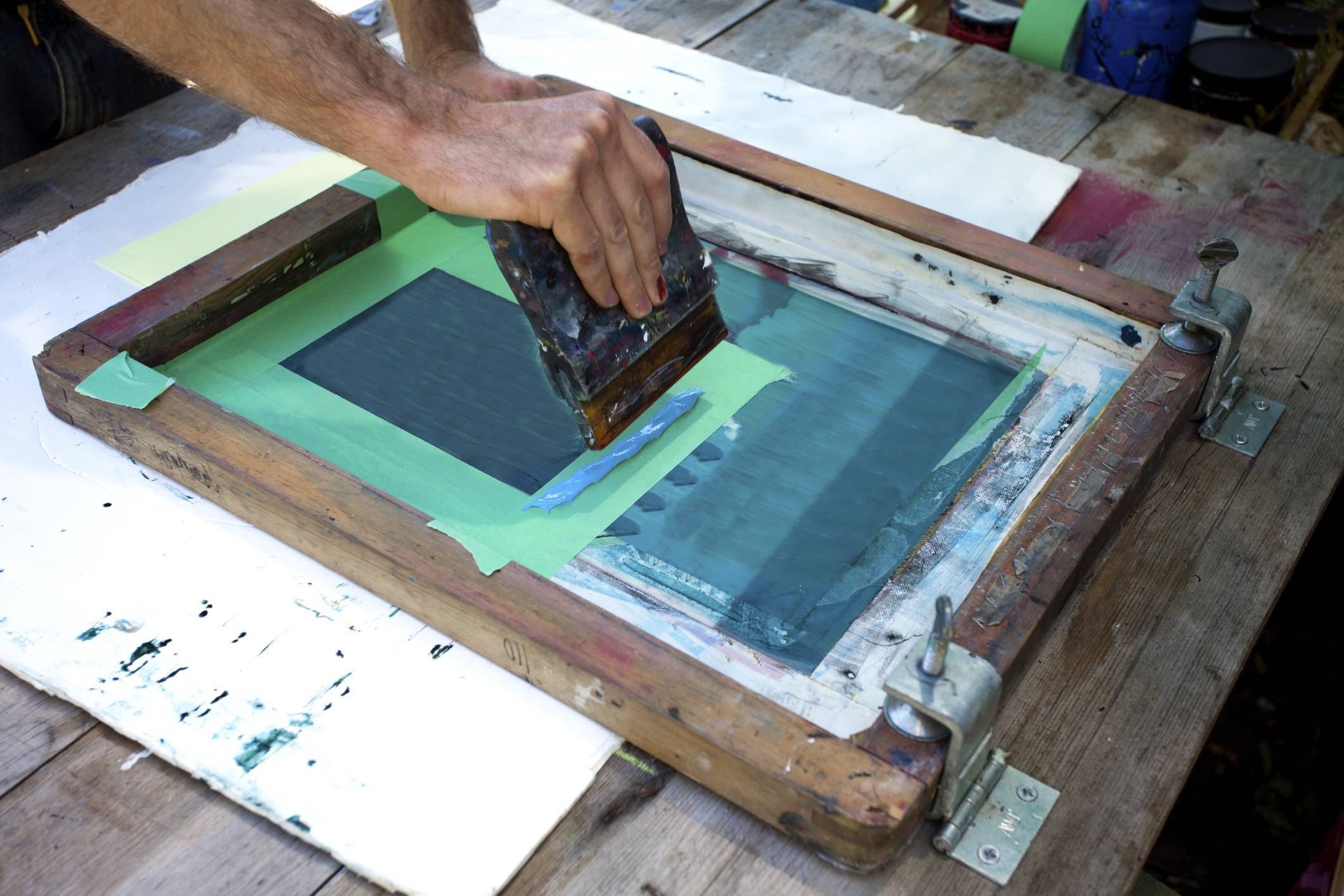Discover the Various Kinds of Screen Printing Techniques for Your Following Job
Screen printing offers a varied variety of strategies that can enhance any kind of creative project. From typical approaches like serigraphy to modern developments such as direct-to-garment printing, each technique has its distinct advantages. Specialized alternatives, consisting of metal and environmentally friendly inks, present even extra possibilities. Recognizing these methods can substantially impact the last outcome. The difficulty lies in picking the most ideal technique for particular requirements and wanted effects. What aspects should one consider?

The Fundamentals of Screen Printing
Screen printing might appear complex, it is fundamentally a straightforward process that entails moving ink with a mesh screen onto numerous surface areas. The technique starts with the production of a pattern, which defines the layout to be printed. This stencil is connected to a mesh screen, commonly made from polyester or nylon. Once the stencil remains in place, ink is put on the screen and pushed through the mesh using a squeegee, leading to the preferred pattern being published on the underlying product.
Screen printing can be executed on a variety of substrates, consisting of paper, plastic, and material, making it a versatile selection for different jobs. The process permits for lively shades and detailed designs, making it prominent in markets such as advertising, fashion, and art. Recognizing these basics equips individuals with the fundamental understanding required to check out even more sophisticated strategies in screen printing.
Traditional Screen Printing Techniques
Typical screen printing methods have actually been used for centuries, preserving the workmanship and virtuosity of this technique. This technique makes use of a mesh screen to transfer ink onto a substrate, such as fabric or paper, enabling vibrant and durable designs. The process begins with producing a stencil, which obstructs specific areas of the screen to control where the ink will be used.
One prominent technique is serigraphy, commonly utilized for restricted editions and artistic prints. An additional is the usage of water-based inks, which are eco-friendly and give a soft feeling on textiles - 10:9 Design Embroidery. In addition, standard methods can consist of hands-on printing, where craftsmens use ink with a squeegee, guaranteeing accuracy and interest to information
These strategies remain valued in the market for their responsive high quality and the unique structures they produce, attracting both customers and makers that value the heritage of screen printing.
Digital Screen Printing Innovations
As the need for faster production and modification in the printing sector has actually risen, digital screen printing advancements have actually arised as a game-changer. This technology mixes typical screen printing methods with digital processes, enabling quick prototyping and complex layouts that were previously hard to attain. One significant development is the intro of direct-to-garment (DTG) printing, which helps with top quality, full-color prints on various fabrics without the demand for displays. Furthermore, improvements in ink solutions have actually resulted in eco-friendly alternatives that preserve vivid shades while reducing environmental effect. Making use of automated systems further simplifies production, reducing labor prices and enhancing precision. These advancements not just deal with small set orders and personalized styles however likewise enable quicker turn-around times, making them excellent for services concentrated on conference client needs in a busy market. Digital screen printing, consequently, stands for an important development in the domain of printing techniques.
Specialized Screen Printing Methods
Checking out specialized screen printing techniques exposes a varied selection of techniques that press the limits of creativity and performance in the printing industry. Among these, glow-in-the-dark inks offer an one-of-a-kind aesthetic impact, making styles come alive in low-light problems. Metallic inks, recognized for their sparkling surface, include a touch of luxury to printed products. One more cutting-edge technique is discharge printing, which removes dye from the fabric as opposed to adding ink, leading to a soft, vintage feel. High-density printing produces an elevated appearance on the surface, boosting tactile engagement. Additionally, water-based inks are acquiring appeal for their vibrant shades and reduced environmental impact. Each of these specialized methods deals with certain style requirements, allowing artists and brands to create standout products that resonate with their audiences. By leveraging these techniques, services can boost their screen printing tasks to brand-new heights, making certain memorable perceptions.
Eco-Friendly Screen Printing Options
Green screen printing options are acquiring traction as the market shifts towards sustainability. Lasting ink selections and the use of naturally degradable materials are crucial components in lowering the environmental influence of the printing procedure. By embracing these techniques, screen printers can add to an extra sustainable future while maintaining high-grade outcomes.
Sustainable Ink Options

Biodegradable Materials Use
As the screen printing industry develops, the consolidation of eco-friendly products is coming to be increasingly vital for eco aware practices. Suppliers and designers are now checking out inks and substrates made from natural, eco-friendly sources that decompose a lot more successfully than conventional equivalents. These eco-friendly alternatives reduce plastic waste and lessen environmental impact, aligning with the expanding need for sustainable products.
Usual instances consist of water-based inks and natural cotton materials, both of which reduce dangerous chemicals and promote eco-friendliness. Brand names that take on these products commonly enhance their market allure, bring in consumers who prioritize sustainability. As understanding of ecological issues remains to climb, the shift in the direction of naturally degradable materials in screen printing is likely to get energy, promoting a greener market standard.
Picking the Right Technique for Your Task
Just how can one identify one of the most suitable screen printing strategy for a details task? The choice depends upon several elements, including the material to be published on, the intricacy of the design, and the wanted manufacturing quantity - 10:9 Design Screen Printing Texas. Direct-to-garment printing is excellent for intricate layouts with numerous shades, while typical screen printing stands out for larger runs of easier graphics.
Additionally, consideration of the end-use of the published product is vital. For exterior applications, methods that get more info supply resilience and weather resistance, such as plastisol ink, might be chosen. On the other hand, environmentally-conscious jobs might gain from biodegradable materials or water-based inks.
Eventually, recognizing the project's distinct needs permits for an educated choice, guaranteeing both aesthetic allure and useful longevity. By evaluating design intricacy, product compatibility, and manufacturing scale, one can successfully pick one of the most ideal screen printing technique to meet their task's goals.
Often Asked Concerns
What Is the History of Screen Printing?
Screen printing came from old China around 1000 AD, evolving through Japan and Europe. By the 20th century, it ended up being prominent in business art and style, changing how designs were produced and distributed worldwide.

How Do I Prepare Artwork for Screen Printing?
To prepare art work for screen printing, one need to assure high resolution, make use of an ideal color setting, create different layers for every shade, and convert text to lays out, ensuring compatibility with the printing process and wanted result.
What Materials Are Ideal for Screen Printing?
The most effective products for screen printing include premium inks, resilient screens, and suitable substratums like cotton, polyester, or blends. Additionally, using appropriate emulsion and mops can improve the printing process and results.
Can I Evaluate Print at Home?
Yes, screen printing at home is feasible. With the right products, configuration, and techniques, individuals can create high-grade prints. Nevertheless, careful factor to consider of workspace and tools is necessary for effective results.

What Are Usual Blunders in Screen Printing?
Common errors in screen printing include incorrect direct exposure times, inadequate ink consistency, imbalance of displays, not enough cleaning of materials, and overlooking to examine prints. These errors can endanger the top quality and accuracy of the final product.
Screen printing might appear complicated, it is basically an uncomplicated procedure that entails moving ink with a mesh screen onto various surface areas. As the demand for faster manufacturing and personalization in the printing industry has surged, electronic screen printing developments have actually arised as a game-changer. Checking out specialty screen printing methods reveals a varied range of strategies that push the limits of creative thinking and capability in the printing market. The ideal products for screen printing consist of top notch inks, durable screens, and ideal substrates like cotton, polyester, or blends (10:9 Design Abilene). Common errors in screen printing include incorrect exposure times, inadequate ink uniformity, misalignment of screens, not enough cleaning of products, and ignoring to evaluate prints